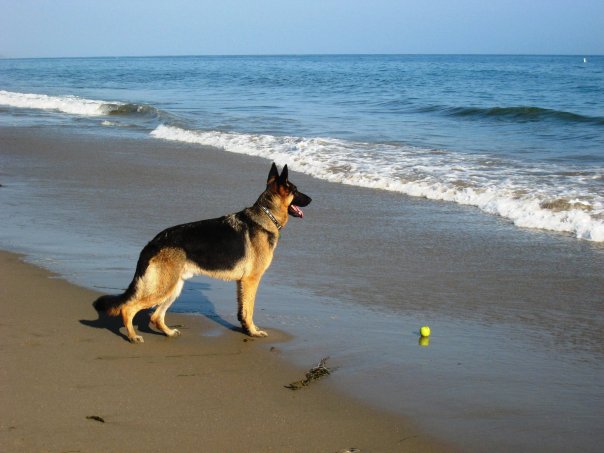Divorce is not uncommon in this day and age. People come together, drift apart and split. This occurs in couples who marry legally. It also happens to committed but not married people. In this situation, it is not the children alone who may suffer. Dogs are also affected by the problems created by break-ups.
Dogs are generally happy creatures. They like to enjoy life. They also are better when their people are happy, too. If a couple they adore and are loyal to are feuding constantly, bickering back and forth, the dog is impacted. Poor Fifi or Rufus is going to be caught up in the emotional maelstrom.
If you are in the middle of an emotional break-up, if you are feuding most of the time, your dog is going to feel and show it. Be watchful and aware of the following symptoms.
• Physical illness. Your dog will become sick to his or her stomach.
• Increased or ever-present anxiety. Your dog will wander restlessly. Separation anxiety may surface where you have never had a problem before. Your dog does not know exactly what is going on, but he or she is worried. A pet senses the change in the environment. He or she notices the separate bedrooms, the increased absences, the packing. In this charged emotional backdrop, the dog has no idea if she or he is coming or going. Why shouldn’t he be anxious?
• The dog may become aggressive. This may take the form of siding with one partner over the other. It could also be aggression turned against the perceived causal factor. It may be generic aggression. The pet could become more protective of toys and personal items. The pet may simply be trying to control whatever he or she possibly can.
• Some dogs withdraw and become shy. They retreat into their own little world. It is the equivalent of trying to ignore the problem. It could also be simply trying to “keep your head down” until it all blows over or at least until things become more “normal.”
• There are other manifestations of behavioral problem. These vary from dog to dog.
The depth or intensity of the effects on the dog and the subsequent acting out or internalization depends on a number of factors. Your dog may be your dog. It may actually glad of the break up. On the other hand, the dog may be both your dog. Its loyalties may be evenly divided. He or she may look at you as a unit, each with a specific purpose. In my home, I am the major care giver; my partner is the chauffeur. The prior problems and emotional upheaval disrupts the routine. This is a major problem. Dogs, like people, are used to and comfortable with routine.
Another problem, beyond the emotional upheaval is the uncertainty. A dog does not know what is actually going on. If packing is involved, your pet is not truly aware of where he or she is going and with whom. In some divorces or separations, this is heightened. The dog actually becomes a pawn in the divorce. One partner may try to manipulate the other through the dog. The poor animal becomes a tool for leverage. If you are going through a divorce, please consider the feelings of you and/or your partner’s pet. In spite of what the law says, your pet is NOT a possession. He or she is a sensitive, caring animal deserving love, attention and security.
The finality of a divorce may bring about a restoration of order. The final separation introduces a sense of normality. Dogs do love routine, but they are adaptable. A change in routine is better than a tumultuous chaotic life or an unsettling void. Routine means the return to a feeling of security. Even is the two of you end up sharing the dog, you can make sure he or she continues to enjoy whatever the two of you have and bring to the important relationship – between you and your dog.
Article written by Carl Plant of www.ohmydogsupplies.com, check out our awesome variety of dog clothing online.
Belize has puppies
12 years ago









No comments:
Post a Comment